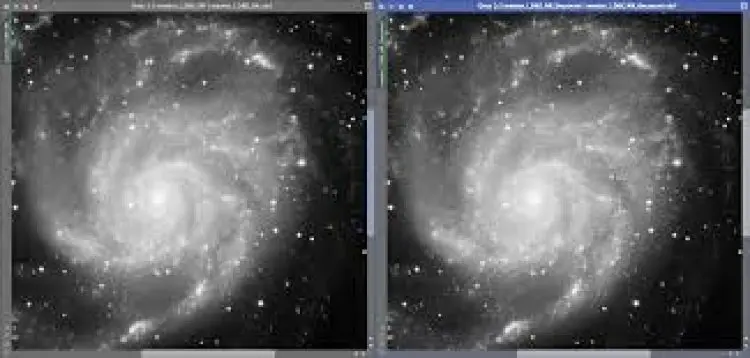Astrophotography: Processing Galaxies in PixInsight
De-Mystify PixInsight and improve your astro-imaging. Includes process icons and practice data.

Astrophotography: Processing Galaxies in PixInsight udemy course
De-Mystify PixInsight and improve your astro-imaging. Includes process icons and practice data.
What you'll learn:
- Using PixInsight to process deep sky galaxy images
- Calibrating and integrating sub-exposures with WeightedBatchPreprocessing
- Noise reduction with MURE Denoise and TGVD
- Sharpening with Deconvolution and Photoshop's Smart Sharpening
- Automatic Background Extraction
- Color combination and calibration
- Creating effective luminance and star masks
- Aesthetic tweaking of your final image
Requirements:
- You should know the basics of deep sky astrophotography and how to acquire multiple sub-exposures of an object through your telescope. We only cover the processing of your images, not how to collect them.
- You'll need a copy of PixInsight (they have a free trial) if you'd like to follow along hands-on.
- The sample data used in the course requires at least 6GB of hard drive space.
Description:
PixInsight is a powerful tool, but with a steep learning curve. If you're ready to take your astrophotography to the next level, this course will de-mystify PixInsight and unleash its potential for you. Even if you're an experienced PixInsight user, I think you'll find some tips, tricks, and scripts you may not have encountered before.
We'll walk through the processing of the galaxy M61, a distant, challenging target that includes an image of a recent supernova! As we go, we'll cover: Astrophotography: Processing Galaxies in PixInsight Udemy
Installing my PixInsight process icons and third-party scripts to simplify things
Identifying and discarding bad sub-frames with the Blink process
Calibrating your frames across multiple nights using the WeightedBatchPreprocessing script
Weighted stacking with WeightedBatchPreprocessing
Linear noise reduction with MURE Denoise
Cropping your integrated images
Creating luminance, range, and star masks
Sharpening your image with deconvolution
Background extraction
Color combination, luminance integration, and photometric color correction
Stretching into non-linear space while preserving star colors
Nonlinear noise reduction with TGVD Denoise
Aesthetic tweaking with RGB and saturation curves
Shrinking and re-shaping stars with MorphologicalTransform
Annotating your images
Final tweaks in Photoshop
This walkthrough uses monochrome data collected over 3 nights using luminance, red, green, and blue color filters. But many of these techniques will be the same if you're using a color camera as well.
Don't let PixInsight's unusual user interface and complexity scare you off - it's worth learning, and can really take your images to the next level.
Who this course is for:
- Astrophotographers intimidated by PixInsight's complexity and learning curve
- Experienced PixInsight users looking for some new tips and tricks
- Create a Fun Life Simulator Game using playMaker and Unity
- Feature Selection for Machine Learning
- After Effects Learn Logo Reveal or Logo Pop-Up Animation
- The Complete Life Purpose Course - Personal Success for You
Course Details:
Astrophotography: Processing Galaxies in PixInsight udemy free download
De-Mystify PixInsight and improve your astro-imaging. Includes process icons and practice data.
Demo Link: https://www.udemy.com/course/astrophotography-processing-galaxies-in-pixinsight/

